Dads sharing books with children
We’ve heard quite a bit from mums reading with their children – and we’ve also been collecting comments from dads about their experiences of sharing books with their children.
The National Literacy Trust (NLT) are urging more dads to share books with their children and to recognise their importance as reading role models, particularly for boys. Read more here
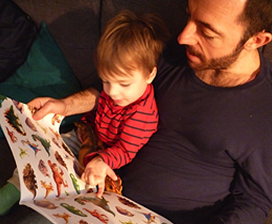
Joe
I love reading with Luke, it’s a great way of sharing an experience together, a privilege really. Some of my earliest memories of Luke as a baby, looking back, are of reading to him. That always felt good, when you are a new parent and you are still trying to work out what you are actually meant to be doing, what your role is, reading to him always felt like a good thing, like somehow you knew what you were doing. There are a lot of books that Luke has enjoyed; last night we read Tin Soldier, by Jess Stockham. He liked that one, we read it again whilst eating breakfast this morning. He went through a phase of just wanting to read Alfie stories, which were all good books. Julia Donaldson’s work is always popular; Tabby McTat, Room on the Broom, The Gruffalo, have all been great. I think we’ve read The Gruffalo so many times that he can now recount large parts of it from memory, well large parts might be a slight exaggeration, but some of it anyway. Luke has recently been given two of the Little Red Train books as a present, they are by Benedict Blathwayt, and they have gone down really well. One of our joint all time favourite books is definitely Man on the Moon: A Day in the Life of Bob, by Simon Bartram, it has great artwork, a funny story, and Bob’s favourite lunch is the same as Luke’s, peanut butter sandwiches and cheese sandwiches, in case you’re interested.
Josh
Neither of our boys will go to bed unless they have had at least two stories. Our one year-old gets very cross if he doesn’t get to read Dear Zoo and insists on being the one who turns the pages and opens the flaps. He also mumbles along to the story. We have had to buy a second copy of the book as our 3 year old is in the ‘mine’ phase and has rediscovered his love for any book his brother enjoys! He has always loved the Spot the Dog books but has a particular soft spot for The Cow who fell in the Canal. It is a Dutch book that I loved as a child and when I read it to him for the first time a year or so ago, I was convinced it would bore him as it was, and still is, significantly longer than his other favourites. To my surprise (and now frustration as I have to read it regularly) he loved it! They both love the ‘That’s not my…’ Usborne series, anything by Emily Gravett and Peepo. I love going to bookshops with them and reading with them is lovely way to say goodnight – particularly if the day has been very busy!
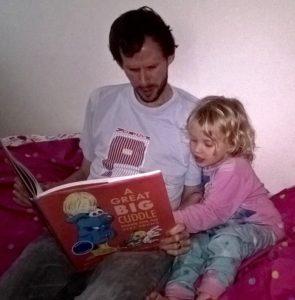 Steve
Steve
I enjoy spending time reading with my daughter (age 3) and as she gets to know certain stories, she can join in their retelling which makes it more fun. At the moment she is particularly into the rhymes in Michael Rosen’s A Great Big Cuddle.
One of her favourites is his poem Once, she uses different voices and expressions for the poor little ‘mom’ for the line “What about me,me, me?!” See Michael Rosen performing the poem ‘Once’ from A Great Big Cuddle here
Ben
Casper loves books and the activities on LoveMyBooks really help to bring them to life for him. Making the books interactive also make it more enjoyable for us dads, especially when you are reading Where the Wild Things are for the tenth time in an evening!
Danny
I love reading with my son Leo. Books have different roles in our house depending on the time of day – at about 5.30 am they are pushed under my nose with the words “Daddy, it’s morning, read me a story!” Later on – they inspire games, making Leo want to re-enact tales of astronauts, knights and ninjas. After nursery, we read to learn about dinosaurs, castles and sharks – which form the conversation at dinner time. Then, when it’s time for bed, we pick a good story to help us calm down and relax… It’s lovely time spent together, focused and imaginative, interactive in a way TV can never be. I can’t wait, as he grows up, to share the stories with him that I loved as a kid.
The Night Pirates
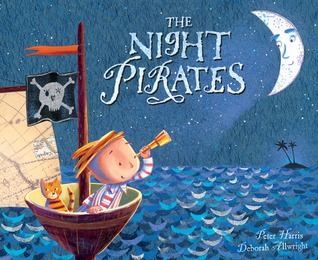 Peter Harris, Deborah Allwright (illus)
Peter Harris, Deborah Allwright (illus)
Egmont
Age 3-5
While Tom is sleeping some strange shadowy shapes enter his street. They are girl pirates planning to steal the front of his house as a disguise for their ship. The pirates agree to take Tom on a night time adventure with them. They head for an island where they meet grown up pirates and find a treasure chest.
An unusual, imaginative and beautifully illustrated story in which grown up pirates afraid of the girl pirates who steal their treasure. There are lots of questions to ponder in this night time adventure; was it all a dream?
Share the story
Read aloud
Before starting to read the book, look at the cover and end papers together, what can you tell about the story?
Read the opening aloud in a whisper and pause at ‘Tom was a little boy about to have an adventure’…. What sort of adventure might he have?
Read the story aloud pausing to talk about what happens and the illustrations as you do.
Join in
When you read the book again children can join in with the repeated phrases eg ‘down, down, down…’ ‘Tom was…’ and what some of the characters said.
Talk about the story
There are lots of questions included in the story, talk about them as you share the book; including the last one ‘No one would ever find out….would they? ’What do children think?
Did anything surprise children about the story?
What might mum or dad say if Tom tells them about the night pirates?
Watch the story
LadyScarlie
Things to make and do
Role play
Children could pretend to be Tom in the crow’s nest illustrated on the cover, perhaps using a large plastic storage container or linen basket to sit in. A cardboard tube could be the telescope. You might like to make a pirate flag too (see below).
Together, role play a conversation between one of the girl pirates and Tom on the ship. What orders might Tom be given?
Make a map and tell the story
Using a large sheet of paper children could draw their own map to show the places in the story and Tom’s adventure with the girl pirates. Children could then use their map to help them tell you the story.
Write a pirate log
Print off the pirate log template. Children can write Tom’s ‘log’ or diary for the night in the story.
Find out more
Find out about illustrator Deborah Allwright here
Sing a pirate song here
Make a pirate flag here
Buy online
The Something
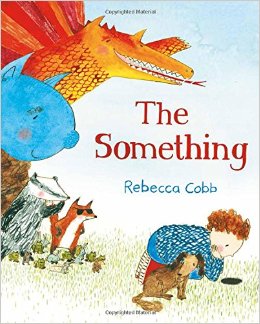 Rebecca Cobb
Rebecca Cobb
Macmillan
Age 3-7
A small boy loses a ball in a hole in the garden. Maybe something lives there, what could it be? A mouse, a badger, a mole, frogs or rabbits, perhaps even something really scary like a troll or a dragon? Everyone he speaks to has a different idea. Perhaps if he watches and waits he will find out…..
This is a beautiful picturebook with a story to stir the imagination and invite speculation about what might be in the hole. With clever illustration of what’s above and (possibly!) below ground there is wonderful detail in the inventive undergound settings. Notice the cherry tree change as seasons come and go, spot the ball in the underground settings.
Share the story
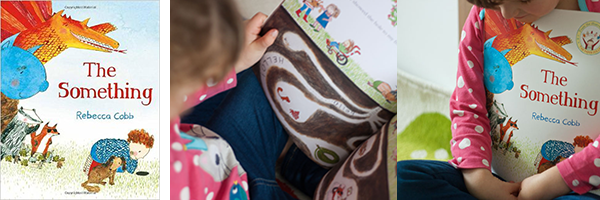
Read aloud
Before reading the story look at the cover, endpapers and title page and wonder together what the story might be about. Read the first two double pages then pause for a moment to talk about what might be in the hole. Continue reading, allowing time to pause and talk about the story or pictures when your child wants to.
Join in
When you share the story again children could join in by adding imaginary conversations with parents, friends, grandparents, I think it’s a…..
Talk about the story
What do children think might be in the hole, share ideas. Could it be something scary? What would they like it to be?
Talk about parts of the story children like and anything they wonder about.
Look closely at the illustrations and talk about what’s happening in the underground settings.
Notice how the cherry tree changes, can you work out together how long this story takes to happen?
Author Rebecca Cobbs says...
We asked Rebecca Cobb about her inspiration for The Something
‘When I was little I found a hole in the ground outside. It looked like the sort of hole that an animal had made so I was sure that it had something living in it. I waited and waited for a long time to see if anything would come out. After a while I got hungry and went to get some mini cheddars. I had decided by now that there was most likely a mouse in the hole and a mouse would probably like mini cheddars - so I posted one down there for it to eat. Almost at once the mini cheddar was pushed back out of the hole by a frog! I have never forgotten my shock and surprise and it taught me that you never know what might be living underground. Even today I am still filled with curiosity whenever I see a hole like that in the earth that might have something down it. ‘
Author Rebecca Cobbs says...
We asked Rebecca Cobb about her inspiration for The Something
‘When I was little I found a hole in the ground outside. It looked like the sort of hole that an animal had made so I was sure that it had something living in it. I waited and waited for a long time to see if anything would come out. After a while I got hungry and went to get some mini cheddars. I had decided by now that there was most likely a mouse in the hole and a mouse would probably like mini cheddars - so I posted one down there for it to eat. Almost at once the mini cheddar was pushed back out of the hole by a frog! I have never forgotten my shock and surprise and it taught me that you never know what might be living underground. Even today I am still filled with curiosity whenever I see a hole like that in the earth that might have something down it. ‘
Claire talks to us
Claire tells us about sharing The Something with her daughter:
The Something is a lovely book that I have enjoyed reading to my 4 year old daughter. The illustrations are beautiful and really capture my daughter's attention. The story is simple yet it inspires imaginative conversations with children. Every time we read it my daughter chooses a different option for who or what lives in the hole.
We went to the beach recently and of course, we dug a hole (as well as building lots of sand castles too). I pointed out to my daughter that it was like the hole in the book and asked her who might live down the hole. Instead of choosing one of the options from the book she suggested a crab which is obviously a more appropriate choice for the beach.
Once back at home, we have drawn pictures of a hole and I asked her to draw who lives there. I made a hole in a shoe box and suggested she used her toys to fill it with who ever lived there. She loved this idea and chose to make a house for a badger. As we don't have a toy badger, she said her prince was a badger. I love how much she loves small world play and how she used her imagination. She filled the shoe box with furniture from her dolls house and happily played for ages with her badger, feeding him soup and making him go to bed.
We've read the book many times now and she remembers all the suggestions and either agrees or tells me no to each suggestion the book offers to what might be in the hole.
Things to make and do
-
Make a phone call – using a toy phone or plastic pots joined with string have imaginary conversations about the hole. Children could pretend to phone friends or grandparents and talk about the hole and what might be in it.
-
Make a book with flaps to show different things which could be in the hole.
-
Make an under the ground scene. Use a small cardboard box such as a shoe box. Turn it on its side. Make an imaginary underground scene using collage or paint to make a background, then add small toys, or playdough models for the creature who lives there. Decorate the top edge of the box to look like grass and make a hole to look through.
-
Dig a real hole. If you have a garden, or relations who have one, children could dig a hole in a flower bed (with permission!) be prepared for lots of worms emerging! This could be fun in a sandpit or at the seaside too.
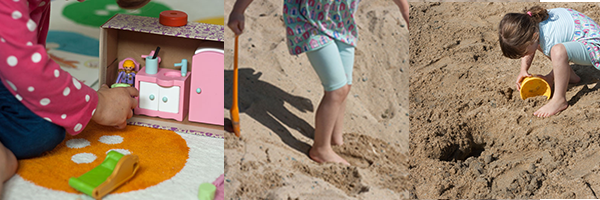
Find out more
Read another book by author illustrator Rebecca Cobb here
Lunchtime
Aunt Amelia
Missing Mummy
Rebecca Cobb also illustrated The Paper Dolls written by Julia Donaldson
Buy The Something here
The Crocodile Who Didn’t Like Water
 Gemma Merino
Gemma Merino
Macmillan
Age 3-5
This is a story about a little crocodile who just didn’t fit in with the kinds of things his brothers and sisters liked to do. He didn’t like water and definitely didn’t take to swim club, even with a rubber ring. He was good at other things, such as climbing, but his brothers and sisters just weren’t interested in that. Eventually he finds his talents lie in completely different directions and he was not meant to like water or swim at all.
There is a pleasing rhythm to the text which makes it great to read aloud and there is lots to talk about too. Reminiscent of the Ugly Duckling, this is an amusing story with a surprise ending which leads to thinking about being different, feeling lonely and wanting to fit in, finding what you are good at and being accepted for who you are.
Share the story
Read aloud
Before you start reading the story look at the illustration on the end papers of the basket of eggs and the basket being carried. What do children think might happen in this story? Read the story aloud pausing when the little crocodile says he knew what to buy. What could it be? Talk about this then continue reading aloud the rest of the story.
Join in
As you read the story again children could join in, for example with the count down to the crocodile jumping in the water, or the repetition of phrases such as ‘this little crocodile’.
Talk more about the story
Talk about how the little crocodile felt about his brothers and sisters and what they might have thought about him.
Have children heard any other stories like this?
What does your child know about dragons, have they seen pictures of dragons or heard stories about them?
Watch the story
Watch the story being read aloud
From: Story Time Kids
Things to make and do
Do some counting
Count the baby crocodiles and count their shoes, by the bath and by the bed.
Do some sorting
Collect plastic or soft toys and sort them together into creatures which like water and creatures that don’t.
Make up a story
Make up a story together about the dragon who didn’t like fire. Perhaps he is really a crocodile? What would he like doing? Perhaps you could write it down and children could draw pictures to go with it.
Make a crocodile or a dragon fact sheet
What do children know about crocodiles? Talk about together about what they know and make a fact sheet.
Alternatively children might like to make a fact sheet about an imaginary creature – a dragon.
Find out more
Find out about author/illustrator Gemma Merino here.
Read another book by Gemma Merino: The Cow who climbed a Tree
Share other stories about creatures who don’t belong in their families:
Watch the story of The Ugly Duckling – Walt Disney cartoon
From: Stefanie Lau
Read The Odd Egg by Emily Gravett
Find out more about crocodiles
Look at an information webpage about crocodiles together. What would your child like to find out? See if you can help them find answers to one or two of their questions.
The Acorn
 Edward Gibbs
Edward Gibbs
Brubaker, Ford & Friends
Age 3-5
A valuable lesson in patience! Little acorn has to fend off all the woodland animals who want to eat it. Acorn promises them that, by leaving it to grow into a mighty oak tree, they will have plenty of acorns to eat year after year. Time passes and, true to his word, the final flap delivers the welcome surprise. A simple, beautifully illustrated, picturebook with an important message and a memorable ending.

Share the story
Read aloud
Before reading the book, encourage children to look at the cover and to talk about what they think is happening. Have they seen an acorn? Do they know what it is? Then read through the story, pausing to talk about the pictures. What would children like to happen in the end?
Join in
As you read reread the book, encourage children to join in where they can. Their confidence and enjoyment will build as you revisit the book together.
Talk about the story
Talk together about which part of the story children like best and why. Why do they think the animals agreed to leave the acorn alone? Have they ever had to wait for something they really want? How does it feel? Was it good to wait
Tell the story
Using the pictures, children can turn the pages and retell the story in their own words.
Things to make and do
Act it out
Children can use animal toys and real or pretend acorns to act out the story and make up their own.
Make an animal colour chart
Using coloured or painted card or paper squares, children can draw and cut out animal shapes from the story and glue them to a sheet of paper. Then they can label them eg white mouse. Are there any other woodland animals they can add, using more colours?
Plant a seed
Plant an acorn or other seeds in a flowerpot and place on the windowsill to watch it grow.
Keep a diary or calendar of the plant’s growth. Children can draw, describe and measure the height of the plant. When grown, it will be interesting for them to see the plant seed and roots.
Make leaf prints
Collect fallen leaves when out for a walk. Can you find any oak leaves? Using water-based paint and a brush, children can paint oak leaves, then print them onto a piece of paper. They can use a paper towel to press the leaf onto the paper. Children could try to make a pattern by making several prints.
Find out more
Read more books by author/illustrator Edward Gibbs here
Titles include:
I Spy on the farm
I Spy under the sea
I Spy with my little eye
I Spy in the Sky
Big
Little Bee
Read other related books:
Hello, Goodbye! by David Lloyd, Louise Voce (illustrator) about life in a tree.
Find out more about Acorns
The life of an acorn filmed by Neil Brumhall
- « Previous
- 1
- 2
- 3

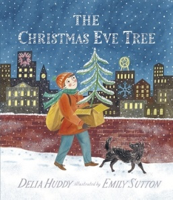 Delia Huddy, Emily Sutton (illus)
Delia Huddy, Emily Sutton (illus)
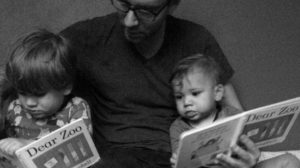

 Follow lovemybooksUK15
Follow lovemybooksUK15